Editor’s note: This is a guest blog from Lee Gannon, Marketing Manager at Southampton-based TrouDigital, one of the UK’s fastest growing digital signage companies, with a drag-and-drop software accessible to all.
Touchscreen technology has a long history dating back to as early as the 1960s and 70s, with IBM Simon the first touchscreen mobile in 1992. The launch of the original iPhone in 2007 was a turning-point, paving the way for a new generation of consumer tech such as tablets, games consoles and wearables.
A more recent innovation has been the rising prominence of touchscreen digital signage. This category refers to interactive screens used to create whole new customer experiences, whether it’s browsing products in-store or physically purchasing them.
These commercial touchscreens mark a breakaway from the consumer market, most often deployed in public spaces such as shopping centres, or on-site by large brands including quick service restaurants.
The Benefits to Customer Experience
The advantages of touchscreen digital signage to retailers in particular has been well discussed, with the key takeaway being increased brand engagement. I would like to focus on the benefits to customers and its impact on their shopping experience.
Bridging the Gap Between Online and Offline
For all the soothsayers who proclaimed the demise of the high street, traditional retailers and independent stores continue to prosper into the digital age, with many shoppers still preferring to physically browse products in a shop. This preference remains true across generations.
It would be ignorant, however, not to acknowledge the threat of online giants such as Amazon. Mobile commerce is becoming more and more popular, with smartphone transactions up 13% in North America between 2016 and 2017. This figure is a testament to the widespread adoption of touchscreen shopping and one that greatly explains the success and potential of touchscreen digital signage, too.
Interactive signage bridges the gap between online and offline allowing, brands to bring their online marketing in front of their physical customers. More than that, it empowers customers with the autonomy that makes online shopping so popular.
The ability to control a touchscreen in a retail environment allows shoppers to personalise their experience, browsing the products they would like to see.
Whereas automated digital signage is limited in the volume of information it can portray, going interactive opens up the possibility of toggling content, made visible upon a click, avoiding the risk of overloading the amount of text on a screen.
The Twofold Effect of Touchscreens on Waiting Time
In today’s age, shoppers are more concerned than ever about speed.
When we walk into a shop – whether it is a supermarket, travel agent or chemist – we want to be able to find what we are looking for quickly. Any confusion in the shop’s layout or product organisation leaves us frustrated and more likely to go to competitors elsewhere or online in the future.
The introduction of touchscreen devices such as kiosks in these environments can have a significant impact, not only reducing perceived waiting time, but actual waiting time.
Not to mention the quality of a customer’s experience.
Interactive wayfinding screens are gradually becoming part of everyday shopping. With the functionality to search and locate products in a store or shopping centre, users minimise the time they spend hunting around the shelves. Pressure on staff is alleviated too as they can avoid stopping what they were doing to try and point shoppers in the right direction (no easy feat in large department stores).
Customer-facing touchscreens have other practical merits.
The same types of questions are often asked about products, requiring sales staff to have a great depth of knowledge about a vast inventory of goods. By implementing small tablet-like devices as part of product stands (think of Apple’s use of iPads to show specs, pricing and comparison tables), retailers can provide information upon request.
A great idea for content is answering FAQs through touchscreens. This allows customers to get the information they require quickly, without having to wait for busy salespeople to finish with other people first. This provision caters for the emerging breed of autonomous shoppers. We want to get in and out as soon as possible.
A New Opportunity for Data-Driven Experiences
Wayfinding and product information displayed using touchscreens has clear benefits to customers, reducing their waiting time and enhancing their experience with a brand. It also opens up whole new opportunities for retailers and advertisers.
By utilising the data being collected by touchscreen devices, they can valuably identify the most popular products, the busiest areas of a store and (uniquely) sales conversion rates (the number of searches for a product vs the number of purchases). All this data strengthens their capacity to better target customers with product promotions.
On one hand, this might mean reorganising the store layout to encourage customers to access areas with otherwise lower footfall. On the other, it could mean displaying ‘related product’ adverts on those very touchscreens, triggered by a search made by a customer. This would help maximise the value of each transaction.
Above all else, it provides a tailored experience to customers.
Transforming Transactions Into Unique Experiences
The introduction of touchscreen technology has already become a staple when it comes to checkout. Self-service stations are making their way into even the smallest of retail outlets. While I would not advocate the complete automation of store transactions (many people would), giving shoppers the choice of self-service or getting assistance from a staff member, is the most important thing. Choice is power.
You will already be familiar with the self-service POS screens in supermarkets, or the kiosks in quick service restaurants like McDonalds. I want to finish by looking beyond the act of simply paying for products and discuss ways touchscreen technology can innovate the wider sales process.
So far, touchscreens have been portrayed as devices that customers operate independently, in light of a behavioural shift towards autonomy. The days of the sales assistant, however, are far from over. In fact, shop workers are likely to take an increasingly consultative role, as they already do in many industries like electronics.
The reality is, many people simply prefer to speak to a human being face-to-face. Far from posing a hurdle to the widespread adoption of touchscreen digital signage, I believe interactive screens and tablets will play an increasingly significant role as sales tools.
To give an example from one of our projects at TrouDigital, we were recently asked to develop a bespoke sales app for a Porsche dealership in London. This interface was to be displayed on a large screen on the shop floor, with sales-staff having access to tablets that could be used to control content on the larger display.
The touchscreens allowed staff to quickly filter through models, price-ranges, colours and technical specifications at the customer’s request, tailoring their experience.
When used in this way, touchscreen displays and tablets can be transformed into interactive catalogues and other bespoke applications. Investments in this technology are particularly worthwhile for high-end brands and retailers who need to stand out and deliver an experience that matches their price-tags.
The ability to show test drive footage of a car, for example, enhances the generic experience of visiting a dealership.
—
To conclude this post, the opportunities for interactive digital signage are endless. Already, touchscreen displays are bringing some of the attractions of ecommerce to the shop floor, reducing waiting times and tracking customer behaviour.
The technology opens the door to the rethinking of traditional customer experiences. When executed imaginatively, brands have a huge opportunity to acquire loyal customers.
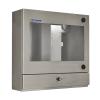
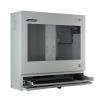
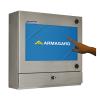
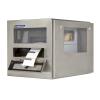
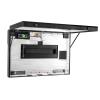
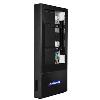
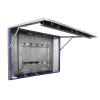
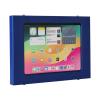
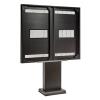
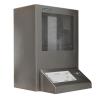






Comments are closed.